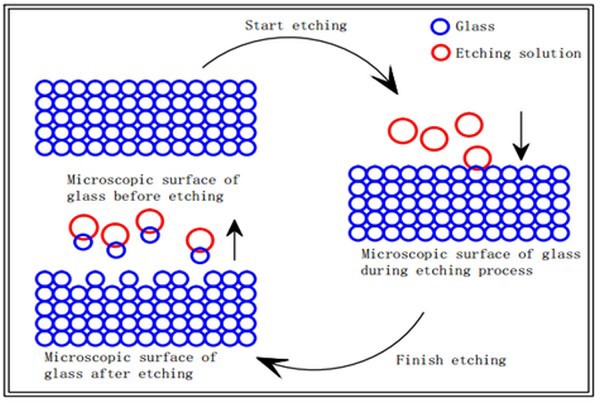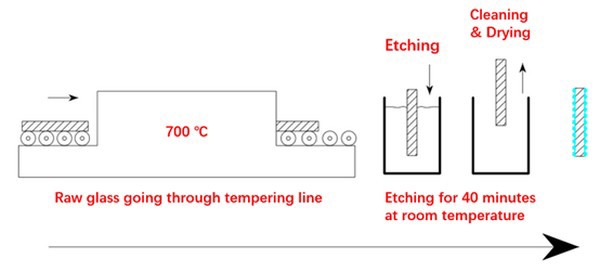As people in horticulture often put it, 1% more light, 1% more yield. "Growers always try different ways to achieve more light inside the greenhouse, which means they have to improve light transmittance of the cover materials", the team with Yuhua explains. "One of the most efficient ways to obtain more light is to add anti-reflective (AR) layers in the glass."
Currently, AR coating and AR etching are the most popular technologies. "An important point, actually far more important, is how long the AR layer could last, because it is directly related to the yield over the next 10 or even 20 years. AR etching, with its special technology, could make the AR layer last as long as the glass’ own lifespan", is what they are assured of at Yuhua. Let’s have a deep view of how the AR etching works.
Different Technologies
“The etching method is to perform a chemical reaction on the glass surface, and then obtain a nano-scale structure through surface etching to achieve an anti-reflection effect. The anti-reflection layer is obtained by subtracting from the glass surface, so the anti-reflection layer is actually the glass itself. Theoretically, the hardness and chemical resistance of the anti-reflection layer are the same as those of the glass," the team with Yuhua explains.

“And the sol-gel method is to apply a layer of an aqueous coating solution on the glass surface, and obtain a nano-scale microporous structure through water evaporation to achieve an anti-reflection effect. The anti-reflection film is obtained by adding something on the surface of glass, so the anti-reflection film and glass have different structures at the structural level.”

Different Manufacturing Procedures
The etching method coating is done after the tempering process, it is the last process, so the etching surface is complete and uniform.

The sol-gel method coating is realized during the tempering process, and it relies on the heat of the tempering furnace for sintering. That is to say, the AR layer is not completely cured before reaching the final heating zone. "At this time, when the film layer on the bottom surface of the glass touches the ceramic roller of the tempering furnace, there is a risk of being scratched. Secondly, the process of glass tempering can be understood as overall heating and then rapid surface cooling, and the anti-reflection film layer is on the glass surface, and will cool down at first, which will cause a risk of sharp shrinkage and cracking (similar to dry land cracking), this will also damage the AR layer."

For more information:
Yuhua Glass
[email protected]
www.yuhua-glass.com
+86 (0) 371 8655 2590
